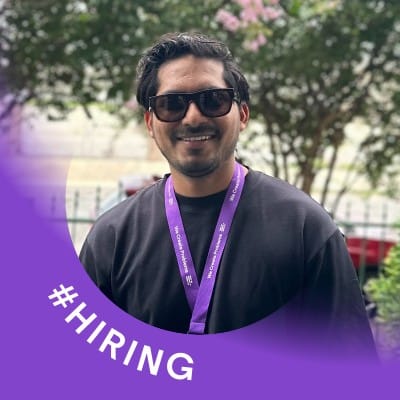The biggest illusion in hiring is that it’s about resumes, interviews, or even skills.
It’s not. It never really was.
Hiring is about trust - and trust emerges from two fundamental signals.
I like to call them the explicit signal and the implicit signal.
Every hire that’s ever happened - whether through a well-run process or pure chaos - relied on some mix of these two signals. The only difference is whether those signals were strong or weak, deliberate or accidental.
Understanding them is how you build a hiring machine that works. Ignoring them is how you waste time, make bad bets, and fall behind.
Let’s break them down.
Signal 1: The Explicit Signal
This is what you can see. Let's call this visible signal here on.
The visible signal is the candidate’s actual behavior. It’s what they do in real-time - how they solve a problem, how they write code, how they write an email, how they collaborate with others, how they think out loud.
It is observable. It is verifiable. It is grounded in action.
In the past, visible signals were rare. You had to make a candidate show up to a panel interview, or complete a take-home assignment. The problem is most companies didn’t have the bandwidth or clarity to generate strong visible signals. So they relied on proxies: degrees, job titles, big-brand employers. These are not signals - they’re assumptions.
Today, thanks to AI and product design, we can generate visible signals at scale. You can watch someone solve a real-world problem. You can simulate the actual job and see how they respond. You can review their reasoning, tone, focus, and tradeoffs - all in one go.
This is where most of the progress in hiring has come from over the last five years.
Example:
A candidate logs into Spottable and gets a simulation of what it’s like to be a product manager at a growth-stage fintech company. They write a product spec, critique a feature design, and record a 2-minute explainer for the CEO. Within 45 minutes, you’ve captured the visible signal - without scheduling a single interview.
This is not hypothetical. This is the new default.
Signal 2: The Implicit Signal
But trust is not only built from what we can see. It’s also built from what others believe about someone - even if they can’t articulate why.
Lets call this invisible signal in the blog.
It’s made up of network effects. Referrals. Peer interactions. Warm intros. Shared context. Vibes. Someone saying “you’ll love working with her” after just one conversation.
The invisible signal is what got your top engineer hired through a friend. It’s what made you go with the junior designer who had glowing recommendations from three people you trust, even if their portfolio was average. It’s the halo around a candidate that makes you lean in before they’ve said a word.
It’s messy, human, emotional - and real.
The problem is that companies try to formalize hiring while pretending the invisible signal doesn’t matter. But it always leaks in. It just does so without structure, which leads to bias, missed opportunities, and hiring from the same echo chamber.
Why This Matters
We are entering the decade of autonomous hiring. That means decisions will be increasingly made without human interviews. They will be based on signal density, not gut feeling. On proof, not process.
But automation only works when trust is high.
To build trust, you need strong signals. Weak signals lead to cautious decision-making — more interviews, more delays, more second-guessing. Strong signals create conviction.
The visible signal builds proof.
The invisible signal builds belief.
Put them together, and you get hiring decisions that stick.
Shift
This is a mental shift most companies haven’t made yet.
They’re still optimizing their interview loop. Still trying to write better behavioral questions. Still adding more people to the panel.
It’s all backward.
The future of hiring is not “more process.”
The future is signal.
You don’t need to ask “tell me about a time when...” if you’ve already seen the time when.
You don’t need to schedule three calls to “get alignment” if the candidate’s peers have already aligned on them through collaboration.
And you definitely don’t need to make bets in the dark.
Finally
Hiring, at its core, is about transferring trust.
The best companies will build systems that generate that trust - not through interviews, not through bureaucracy, but through clear signals.
Visible signal. Invisible signal.
That’s all you need.
The rest is noise.

